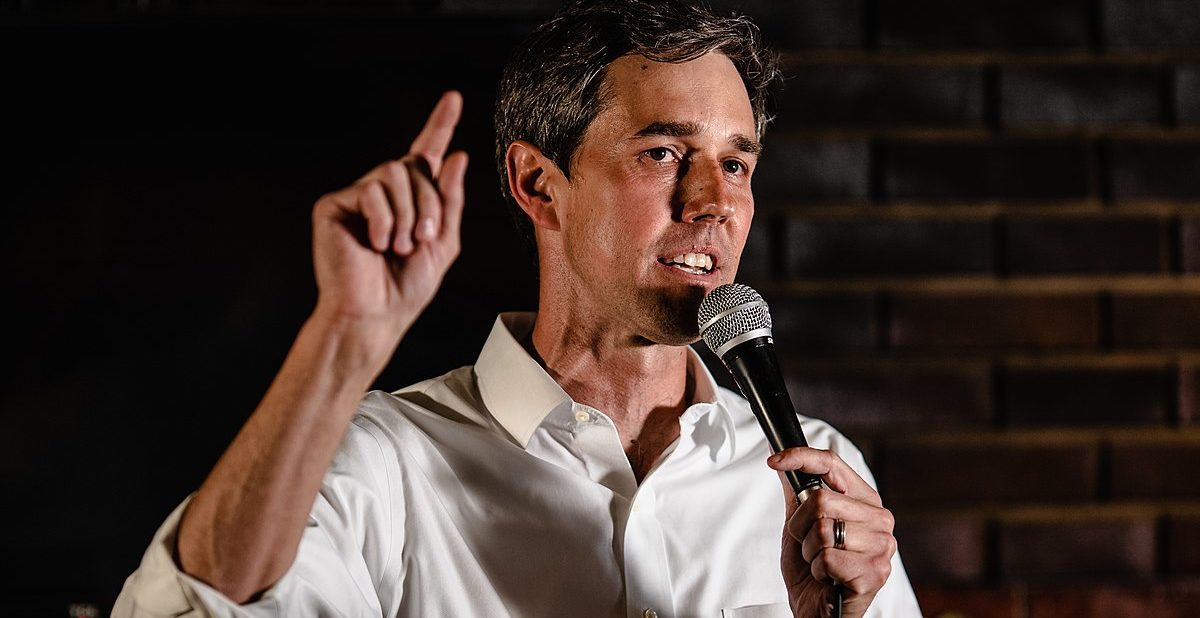At 18 months out from the 2020 U.S. presidential election, Democratic Party candidates are already rolling out key planks of their platforms, and yesterday Beto O’Rourke joined the fray on climate issues, with the unveiling of a four-point plan to combat climate change.
The page is long not only on rhetoric of the dangers of climate change, but also proposes some big top-line measures, such as setting a “legally enforceable standard” to ensure net zero emissions by 2050 and to get “halfway there” by 2030. In order to do that, O’Rourke is proposing a $5 trillion, 10-year mobilization in his first bill to Congress if elected.
For land owned by the government the timeline would be faster, with Beto proposing a net-zero carbon budget by 2030 for federal lands, along with an immediate halt to all new fossil fuel leases and an acceleration of renewable development.
O’Rourke would also have the United States re-enter the Paris Agreement (while pushing for a more ambitious program), institute a “’buy clean’ program for steel, glass and cement”, set a trajectory for zero-emissions vehicle adoption, and deploy more than $250 billion in a super-research program to achieve clean energy breakthroughs, among many other components.
All in all, this is the most comprehensive and wide-ranging plan proposed by any presidential candidate that pv magazine has seen to date. It is unclear whether or not it is more ambitious than Bernie Sanders’ plan, as Sanders’ issues page has no concrete dates for action and simply refers to passing a Green New Deal. This can be seen as a tacit endorsement of the 100% renewable electricity by 2030 portion of the proposal put forward by Alexandria Ocasio-Cortez.
Means and ends
While the O’Rourke campaign has not shied away from putting out dollar figures and dates, when trying to determine how to achieve these targets – or even what they are – things get a lot murkier.
The plan promises to set a legally enforceable standard to get to net zero emissions by 2030, but it is not entirely clear what net zero emissions means. As debates over the feasibility of this target rage on Energy Twitter, many seem to be forgetting that the plan does not clearly state whether this means merely electricity generation, the entire energy system, or the entire economy including agriculture and waste.
As far as electricity generation goes, there is a significant question as to whether this net zero mandate would be achieved through deployment of renewable energy or nuclear power, through carbon draw-down programs, or via a combination of these three.
Instead, O’Rourke’s site says that the standard will set a “clear price signal” to the market, and also pledges to create “a mechanism that will ensure the environmental integrity of this endeavor” – a statement which pushes the outer limits of vagueness, and sheds no light on how choices between individual technologies would be made.
Infrastructure, tax breaks and R&D
Much of the spending outlined in the plan would be through somewhat familiar routes: government-backed lending, tax breaks and R&D investments.
Instead of naming specific technologies or even specific policies, O’Rourke’s plan talks a lot about infrastructure. In the promise to mobilize $5 trillion, the biggest chunk at $3 trillion would be through existing financial institutions and a new “dedicated finance authority” to fund climate-related infrastructure projects.
Another $1 trillion would go to “limited-duration, performance-based, climate change tax incentives” to scale “nascent technologies” in all sectors. And here we get into what nascent means. Would energy storage qualify? Electric vehicles? Or would this only be for small modular reactors and other technologies which have not yet been commercialized?
For both the lending and tax incentives the details matter, as some technologies – including nuclear reactors – require different and more intensive kinds of support to get off the ground, compared to what is needed to deploy more solar, wind and batteries faster. This is doubly true for newer nuclear designs.
Finally, there is the $250 billion in research and development, which would be “spread across disciplines and domains including national labs, public, private, and land-grant colleges and universities, incubators and accelerators”.
All of this would be paid for via increased taxes on large corporations and the wealthy, and particularly by revoking tax breaks for fossil fuel companies.
Markets & competition
And for all of what is not clear in the plan, it does speak to the ideology of the O’Rourke campaign’s approach to climate change, which is a faith in markets backed by clear policy signals. The following passage is telling:
In all of these significant actions, we will harness the power of the market, but also recognize that the market needs rules in order to function equitably and efficiently — not just incentives, but accountability too. That is why Beto’s net-zero guarantee is such a critical component of his — and any — credible framework to fight climate change.
Amid the murk on electricity sector issues, there is what could be a nod to rooftop solar and other behind-the-meter resources in there, with the statement that the plan will advance “consumer choice and market competition in electricity and transportation.”
The plan has already won O’Rourke, who had slipped to sixth-place in the aggregation of polls for the Democratic nominee on RealClearPolitics.com, substantial media attention. However, there are still many details left, and as such this could be seen as more of a vision statement than a concrete plan.
This content is protected by copyright and may not be reused. If you want to cooperate with us and would like to reuse some of our content, please contact: editors@pv-magazine.com.









Only Capitalism can address the climate change concerns of the millennial generation. Beto’s economic model reeks of MMT, “Modern Monetary Theory”. MMT is Keynesian Socialism on steroids and is cut from the same cloth as Medicare for All.